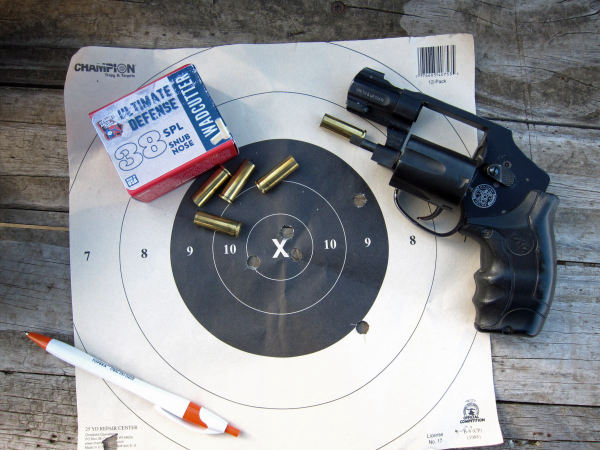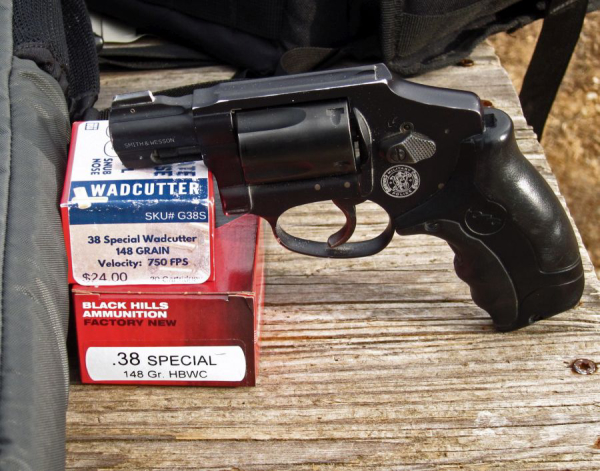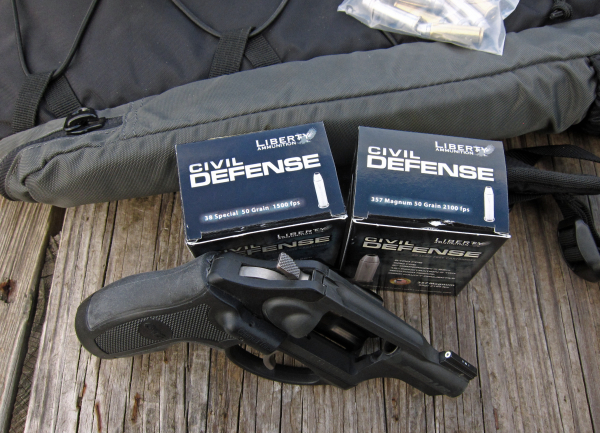Shortly before the sad events of April 2023, I’d taken to the range with a selection of loads to check velocity and accuracy. Due to the flurry of activity in the intervening months, I find I’ve left that information behind, failing to report to you. I recovered the information when I sought information about one of the ammo companies – Georgia Arms – on occasion of their recent structure fire.
The damage caused by putting the fire down has ceased production – but they’re working to get back on line.
Better late than never; as they work hard to get back to production, I have some information about their premium self-defense 38 snub load. While I’m at it, I have other shooting results for your perusal.

The Georgia Arms G38S load is a full wadcutter – looks just like a paper-punching load from way back. What makes it special?
From the announcement of the load, here are the details:
Mark Fricke of AFTT, along with Chuck Haggard of Agile Training, had determined that 38 Special wadcutters, fired from snub (1 7/8” – 2” barrels) revolvers tended to penetrate gel blocks to the FBI appropriate distance. While they didn’t expand, “duty” loads that rely on expansion either didn’t expand or did expand and lacked adequate penetration.
With the able assistance of Rob Garrett, they were able to get Georgia Arms to customize a load just for snubs: the G38S, a 148 grain wadcutter, loaded to an advertised 750 fps.
That velocity gets the necessary penetration without excessive recoil.
Mark has tested the round and found that it averages around 700 fps (the fastest of the wadcutter loads tested) and it reaches 13-16” in ballistic gel – even through four layers of denim.
He also found that there is some expansion with the load.
I got a box of the ammo from Mark and tried it in April. Fired from the S&W M&P 340 (sub-2” barrel), I got an average velocity of 773 feet-per-second. That’s right in the ballpark, with some room to spare, in the event it’s fired in guns with a larger barrel-cylinder gap.
In terms of point of impact, shooting the near-constant carry M&P 340, I found that holding half of the XS Sights front “ball” out of the “bucket” (rear notch), the hits were centered over the shaded portion of the B-8 repair center. Three hits were in the “X” and my lousy grip produced a pair of 9s. One of those was called.


I elected to check an old favorite load, the Black Hills 148 gr. hollow-based wadcutter. I found it averaged 630 FPS. That’s a little slow but a terrific load nevertheless.
An old pal had cobbled together a variation of the old Jeff Cooper 38 snub load; the boss called for a 160 grain SWC; rounding up from 158 gets that and Mike provided some 158 gr. cast semiwadcutter bullets. The load was about a half-grain light of Cooper’s load. When fired from the Ruger LCRx 357 Magnum 2” snub, I got an average of 839 FPS.
The load hit just a bit under the sights at ten yards. It thumped a bit in the 17-ounce LCRx.
Since I had the snubbed revolvers at the range, I grabbed current samples of Liberty Civil Defense ammo that I had for testing. I thought it more relevant to check the Civil Defense loads out of a short, concealed carry gun. The Civil Defense ammo is packed in 20 round boxes; in 38 Special, the load features a fifty-grain hollow point. That’s way light for caliber. The advertised velocity is 1,500 FPS. I have no idea what length barrel they checked that out of.


The Civil Defense 357 Magnum load has the same weight projectile with an advertised velocity of 2,100 FPS … carbine territory.
The 38 Special load averaged 1,340 FPS from the two-inch Ruger LCRx. The 357 yielded 1,979 FPS – very close to advertised velocity. Magnum recoil was abrupt, but not painful.
Whatever your preference, there seems to be a concerted effort to provide ammo to fulfill that preference.
-- Rich Grassi